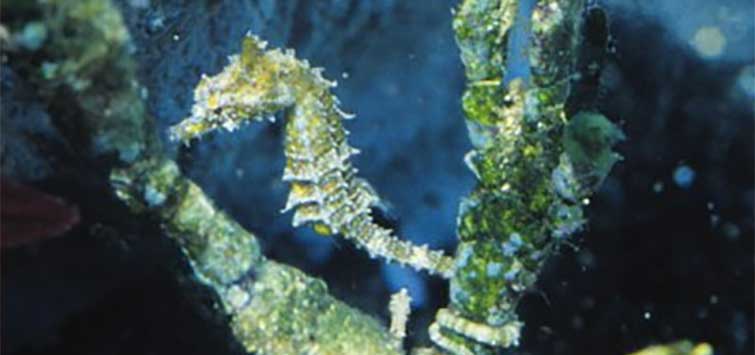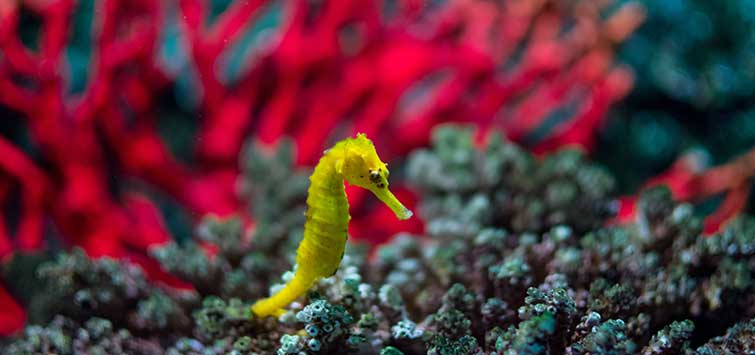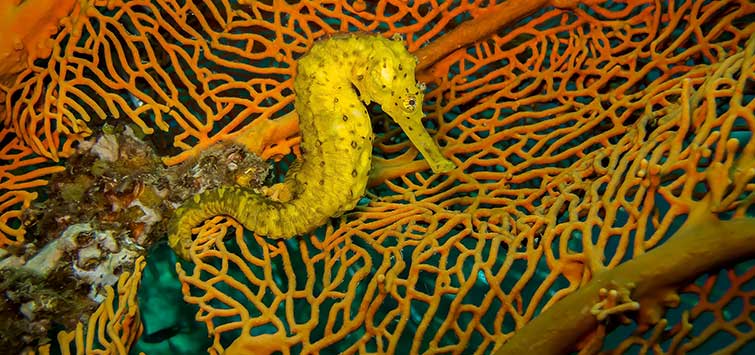Hippocampus zosterae
Common Names: Dwarf seahorse, pygmy seahorse
Type Locality: Laguna Grande, Pensacola, Florida
Range: Bermuda, southern Florida, Bahamas, and all around the Gulf of Mexico
Taxonomic Troubles: This is the original name, but the genus may undergo revision soon.
Size: Usually a maximum of 3 cm (just over an inch), though specimens up to 5 cm (2 inches) are occasionally reported.
Preferred Water Chemistry: Subtropical marine. While these fish can be kept at tropical temperatures, they will thrive at room temperature—high 60s to low 70s. They can handle a specific gravity of 1.019 to 1.025, as long as it remains stable.
Difficulty: A very hardy seahorse, but feeding requires a big commitment.
Tank Setup: This is one species that needs a small aquarium in order to concentrate its food, as the fish does not actively hunt but waits for a prey item to drift by. There should be numerous sites for the fish to grab onto with the prehensile tail.
Feeding: A micropredator that will almost never take non-living foods. Newly hatched brine shrimp is adequate for fry and adults, but better is a varied diet of brine shrimp, small mysis, and ’pods—amphipods and copepods.
Breeding: Pregnant dads are the rule among all seahorses. This species breeds readily in captivity. The female deposits her eggs into the males’ brood pouch, where their babies grow until they are born. The fry can be left in with the parents or removed to a grow-out tank.
Fish Description
The colors and patterns of these little animals are highly variable, both between individuals and on a single specimen at different times. Colors range from white to brown to black to green, and patterns can be solid, mottled, marbled, or splotched.
Notes
The dwarf seahorse has been a favorite for decades. While most seahorses are extremely difficult to keep, this species is only moderately difficult, and that is only because of the problem of keeping them supplied with adequate amounts of living foods. Since they can subsist from birth to death on brine shrimp nauplii, a dedicated aquarist can manage the task. The biggest downside to this species is their short lifespan of 12 to 18 months. This is partially countered by their rapid reproduction, with three generations per year possible.

.png?h=595&iar=0&w=2781&hash=5FD5E69473BCC22199FBFA2FB71B6033)



